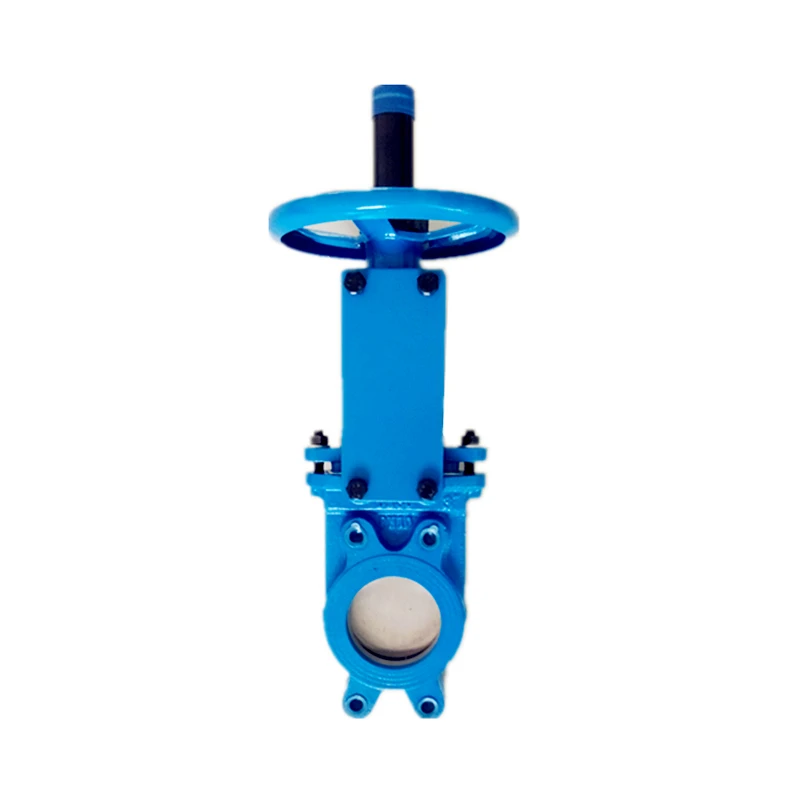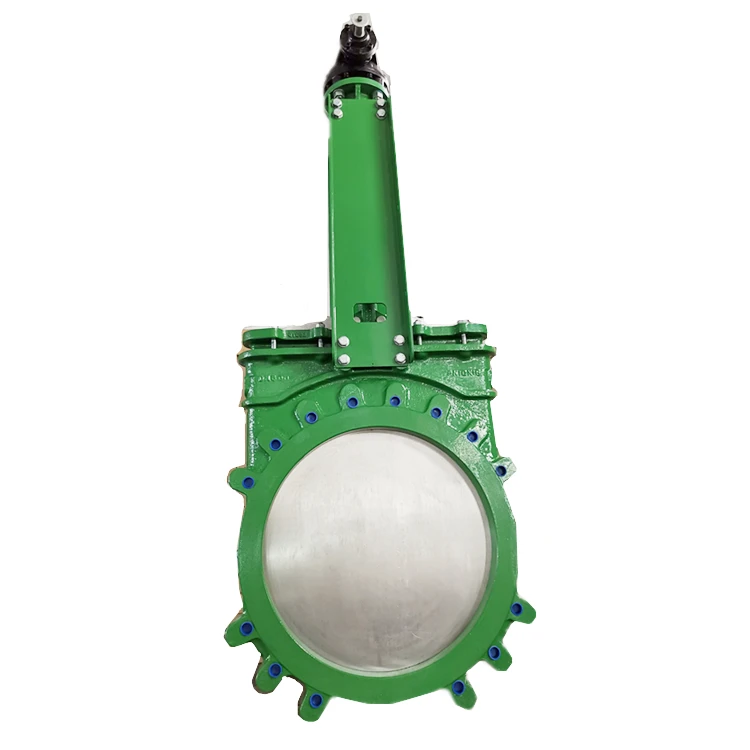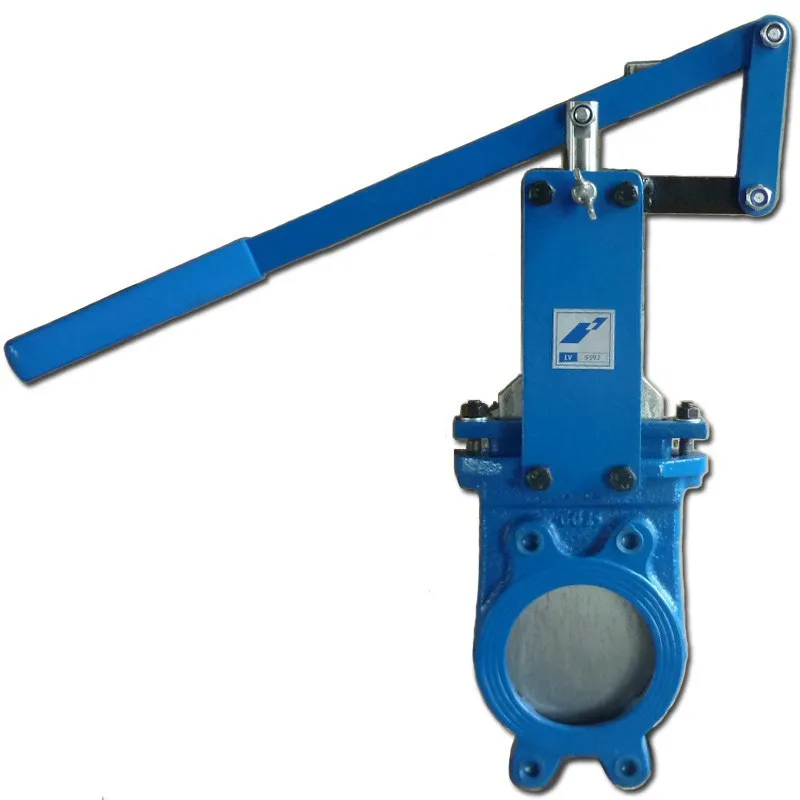Understanding Sluice Knife Gate Valves for Effective Slurry Control
Key Takeaways
Sluice knife gate valves play a pivotal role in managing the flow of slurry within various industrial applications. Their unique design facilitates efficient channelization of viscous materials, minimizing downtime and maintenance while achieving operational efficacy. The integrated blade mechanism within these valves ensures a smooth shut-off, reducing turbulence and wear on the system. Furthermore, the robust construction of sluice knife gate valves enables them to withstand the demanding conditions often associated with abrasive or corrosive substances. While traditional valves may struggle with solids and sediments, these specialized gate valves excel by providing a tight seal that actively prevents leakage, promoting environmental compliance and operational safety. The combination of durable materials, precise engineering, and user-friendly operation makes sluice knife gate valves an indispensable asset in sectors such as mining, wastewater treatment, and chemical processing. Understanding their functionality not only enhances system performance but also contributes to cost-effective solutions in fluid management challenges.
Introduction to Sluice Knife Gate Valves: Principles and Applications
Sluice knife gate valves serve a pivotal function in controlling the flow of slurry in various industrial settings. These valves consist of a flat, rectangular gate that can be raised or lowered to regulate the passage of materials, including liquids and solids suspended in fluid. A key advantage lies in their ability to create a full shut-off when closed, ensuring no leakage occurs during operation. This feature is particularly essential in processes that involve abrasive or corrosive media, where maintaining system integrity is crucial.
The design incorporates robust materials suitable for harsh environments, allowing these valves to withstand extreme pressures and temperatures associated with slurry applications. Their straightforward mechanism contributes to lower maintenance costs and increased reliability over time. Furthermore, the compact structure allows for easy installation into existing piping systems, making sluice knife gate valves versatile across industry sectors such as mining, wastewater treatment, and pulp and paper production.
"Before selecting a valve type for slurry applications, always consider compatibility with materials involved and specific operating conditions."
Understanding the principles behind sluice knife gate valves enables engineers and technicians to make informed decisions that enhance operational efficiency while ensuring safety. The rising demand for reliable slurry control solutions highlights the importance of these valves in modern industrial processes.
Key Design Features of Sluice Knife Gate Valves
Sluice knife gate valves represent an essential component in managing the flow of slurry and other viscous materials across various industrial applications. A primary design feature is the knife blade, engineered for effective cutting through solid and fibrous particles suspended in fluid, ensuring a reliable seal when closed. The body of these valves is typically constructed from robust materials, such as cast iron or stainless steel, which offer enhanced durability and resistance to wear, critical in environments with harsh conditions.
Another significant characteristic is the actuation mechanism, which can vary between manual, electric, or pneumatic systems. This variability allows operators to select a control method that aligns with their specific operational needs. The flanged connections provide easy integration within existing pipeline systems, ensuring a secure fit that minimizes potential leakage issues.
The design also emphasizes user-friendly maintenance. Many sluice knife gate valves come equipped with features that facilitate routine inspections and repairs without necessitating extensive disassembly. This accessibility ultimately extends the valve's lifespan and reduces downtime during maintenance activities.
Flow direction within these valves can be vertical or horizontal; they are often engineered for bi-directional flow capabilities. This flexibility enhances performance in diverse setups, catering to various industry demands such as mining, wastewater treatment, and chemical processing. Through the careful consideration of these distinct design features, sluice knife gate valves contribute significantly to effective slurry management while ensuring operational efficiency and reliability in industrial applications.

Operational Benefits of Sluice Knife Gate Valves in Slurry Control
Sluice knife gate valves play a vital role in the management of slurry systems, providing several operational benefits that enhance efficiency and reliability. One primary advantage is their ability to maintain a tight seal when closed, effectively preventing leakage of slurry materials. This characteristic is crucial in industries where contamination and material loss can significantly impact operational costs and environmental compliance. The design of these valves allows for minimal turbulence within the flow, which contributes to improved flow characteristics and reduced wear on components.
Additionally, their simple actuator mechanisms promote ease of operation, allowing for rapid opening and closing cycles. This efficiency is particularly advantageous in processes that require frequent adjustments to flow rates or conditions. The robust construction typically employed in sluice knife gate valves withstands challenging environments, including high pressures and abrasive materials, thus extending the lifespan of the valve and reducing maintenance frequency.
The ability to handle highly viscous materials without undue stress also highlights their effectiveness in slurry control applications. Overall, these features enable enhanced process control and contribute to a more streamlined operation, aligning with the needs of various industries involved in material processing and transportation.

Industry Applications: Sluice Knife Gate Valves in Action
Sluice knife gate valves play an essential role across numerous industries, particularly where the handling of slurries and other challenging materials is involved. Their robust design is tailored for high-performance applications in sectors such as water treatment, mining, and pulp and paper manufacturing. In the water treatment sector, these valves are employed to control the flow of sludge and other particulates effectively, minimizing the risk of clogging and ensuring smooth operation. This efficient flow regulation translates to improved system uptime and reduced maintenance requirements.
In mining, sluice knife gate valves facilitate the management of thick slurries generated during mineral extraction processes. Their ability to handle high-volume flows with varying consistencies makes them ideal for this application. Operators benefit from their reliable sealing properties, which prevent leaks and spills, thus enhancing safety measures on site.
The pulp and paper industry also relies on these valves for controlling fibrous slurries during various stages of production. Their design minimizes wear and tear from abrasive materials, thus extending service life while maintaining operational efficiency. The precise control afforded by these valves ensures consistent quality in final products, which is vital in a competitive market.
Industry | Application Areas | Key Benefits |
|---|---|---|
Water Treatment | Sludge Management | Flow control, Reduced clogging |
Mining | Thick Slurry Management | High volume handling, Leak prevention |
Pulp & Paper | Fibre Control in Production | Durability in abrasive environments |
This table illustrates how sluice knife gate valves enhance operational efficiency across different industries while affirming their vital contribution to effective slurry control mechanisms. Their unique characteristics provide significant advantages within each sector mentioned, demonstrating versatility in performance while addressing specific industrial challenges.
Conclusion
Sluice knife gate valves stand as a pivotal component in the management of slurry systems across multiple industries. Their design optimally balances durability and functionality, with features such as a robust blade mechanism that effectively seals and isolates flow, preventing leakage. The operational advantages of these valves include reduced maintenance needs and enhanced control over slurry transport, thereby improving system efficiency. Additionally, the ability to handle high-pressure environments and abrasive materials further cements their utility in sectors such as mining, wastewater management, and chemical processing. The long service life combined with straightforward installation processes contributes to lower overall operational costs. An understanding of the mechanics and benefits inherent in sluice knife gate valves is crucial for engineers seeking to optimize slurry control systems in various applications.
FAQs
What is a sluice knife gate valve?
A sluice knife gate valve is a type of valve used for controlling the flow of liquids, particularly in slurry applications. It features a blade-like design that can slice through the media, providing precise shut-off capabilities.
How does a sluice knife gate valve function?
The operation involves raising or lowering a blade within the valve body to open or close the flow passage. This mechanism allows for quick and effective isolation, essential in systems handling heavy slurries.
What are the advantages of using sluice knife gate valves?
Advantages include superior sealing performance, reduced leakage risk, and ease of maintenance. Their design allows for minimal pressure drop and efficient operation under varying flow conditions.
In which industries are sluice knife gate valves commonly used?
These valves are widely utilized in water treatment, mining, pulp and paper manufacturing, and chemical processing industries where reliable flow control is critical.
How do design features enhance their performance in slurry control?
Key design features such as robust construction, materials resistant to abrasion, and customizable sizes improve durability and reliability. The ability to handle high solids content without clogging is particularly beneficial.
What maintenance is required for sluice knife gate valves?
Regular inspections are necessary to identify wear or damage. Lubrication of moving parts helps maintain functionality. Ensuring proper alignment during operation is crucial for preventing operational failures.
Can sluice knife gate valves be automated?
Yes, many sluice knife gate valves can be integrated with automated systems for remote operation. This increases efficiency and enhances control over fluid management in industrial processes.




